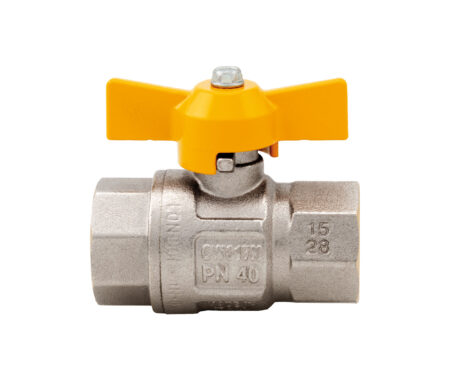When it comes to controlling the flow of gas in various applications, ball valves are indispensable components. However, it’s important to understand that not all ball valves are created equal. In this blog post, we will delve into the key distinctions between gas ball valves and LPG ball valves, shedding light on their unique characteristics and applications.
Gas ball valves serve a specific purpose in controlling the flow of natural gas or other gases. Found in residential, commercial, and industrial settings, these valves play a vital role in gas distribution and management. With their reliable shut-off capabilities, gas ball valves allow for precise control over the gas flow. Constructed from robust materials like brass, stainless steel, or carbon steel, these valves offer durability and corrosion resistance suitable for general gas applications.
On the other hand, LPG ball valves are designed explicitly for applications involving the control of Liquefied Petroleum Gas (LPG). LPG is a flammable hydrocarbon gas commonly used as a fuel in heating appliances, cooking equipment, and vehicles. LPG ball valves are purpose-built to handle the unique properties and corrosive nature of LPG, ensuring safe and efficient flow control. These valves incorporate materials such as brass alloys that possess enhanced durability and resistance to pitting and dezincification.
By understanding the differences between gas ball valves and LPG ball valves, you can make informed decisions when selecting the appropriate valve for your specific gas or LPG application. Whether it’s for a pipeline, gas meter, heating system, LPG storage tank, or distribution system, choosing the right valve ensures optimal safety and performance in industrial, commercial, and residential settings.
Gas Ball Valves:

Gas ball valves are designed specifically for controlling the flow of natural gas or other gases. These valves are commonly used in residential, commercial, and industrial settings where gas distribution and management are essential. A gas ball valve provides a reliable shut-off mechanism, allowing for complete control over the gas flow.
In terms of construction, gas ball valves are typically made from materials such as brass, stainless steel, or carbon steel. These materials offer excellent durability and resistance to corrosion, making them suitable for general gas applications. The internal structure of a gas ball valve consists of a hollow ball with a bore through its center. When the valve is open, the bore aligns with the pipeline, allowing gas to flow freely. By rotating the handle or lever, the bore can be closed, cutting off the gas supply.
LPG Ball Valves:

LPG ball valves, on the other hand, are specifically designed for applications involving the control of LPG (Liquefied Petroleum Gas). LPG is a flammable hydrocarbon gas commonly used as a fuel in heating appliances, cooking equipment, and vehicles. Due to the unique properties and characteristics of LPG, dedicated ball valves are necessary to ensure safe and efficient flow control.
LPG ball valves are constructed using materials that are resistant to the corrosive effects of LPG. Brass alloys with enhanced durability and resistance to pitting and dezincification are often used in their construction. These valves undergo additional testing and certification to ensure their compatibility with LPG applications.
Safety is paramount when dealing with LPG systems, and LPG ball valves incorporate specific safety features. These features can include built-in fire-safe designs, anti-static devices, and explosion-proof options. The incorporation of these safety measures reduces the risk of accidents and ensures the protection of personnel and equipment in LPG handling environments.
Choosing the Appropriate Valve:
When selecting a valve for a gas or LPG application, it’s crucial to consider the specific requirements and characteristics of the system. Gas ball valves are suitable for general gas applications, where the gas being controlled is not corrosive. LPG ball valves, on the other hand, are designed to handle the corrosive nature of LPG and include additional safety features specific to LPG systems.
In conclusion:
gas ball valves and LPG ball valves serve the common purpose of regulating gas flow but differ in their construction, materials, and safety features. Gas ball valves are suitable for general gas applications, while LPG ball valves are specifically designed to handle the unique characteristics of LPG. Understanding these differences is essential for selecting the appropriate valve to ensure safe and efficient gas or LPG management in various industrial, commercial, and residential settings.


